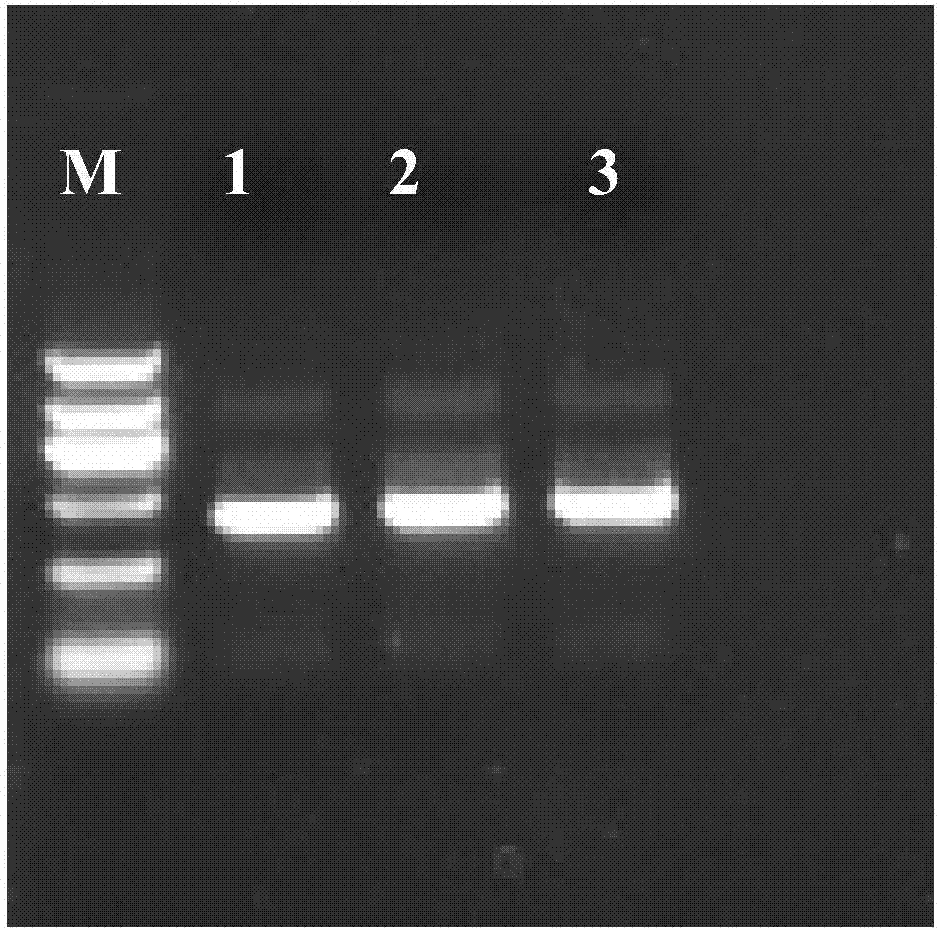Method of analyzing rice phyllospheric endophytic bacteria community structure
A technology of endophytic bacteria and endophytic bacteria, applied in biochemical equipment and methods, measurement/testing of microorganisms, DNA/RNA fragments, etc., can solve scientific problems that affect data analysis and analysis quality
- Summary
- Abstract
- Description
- Claims
- Application Information
AI Technical Summary
Problems solved by technology
Method used
Image
Examples
Embodiment 1
[0048] Embodiment 1, rice and its phyllospheric endophyte total DNA extraction experimental scheme
[0049] 1) Preparation: The mortars, hammers, centrifuge tubes, tweezers, etc. used in the experiment were all sterilized by high pressure steam in advance.
[0050] 2) Removal of bacteria on the surface of rice leaf tissue: Soak the rice leaves frozen at -80°C in 75% (volume percent Hanlang) ethanol for 5 minutes, and then transfer the rice leaves to a place where the surfactant Tween20 (AMRESCO , Solon, USA) sterile water (ddH 2 O and Tween20 were added at a volume ratio of 1000:1, vortexed for 2-5min), and finally sterilized with ddH 2 O wash 4 times.
[0051] 3) After fully grinding with liquid nitrogen, take about 100mg and place it in a 2ml centrifuge tube.
[0052] 4) Add 567 μl of TE buffer solution (recipe: solvent is water, solute is 10 mM Tris, 1 mM EDTA; pH 8.0), vortex, and mix thoroughly.
[0053] 5) Add 30 μl of 10% (10 g / 100 ml) SDS and 20 μl of proteinase K ...
Embodiment 2
[0062] Embodiment 2, nested PCR amplification
[0063] 1. Template: the rice leaves extracted by the method of Example 1 and the total DNA of endophytes
[0064] 2. Enzyme: KOD Plus (Toyobo, Japan)
[0065] 3. Primers (concentration 10 μM): 329F / 1417R, 799F / 1193R
[0066] 329F: 5'-ACGGHCCARACTCCTACGGGA-3' (SEQ ID NO: 1);
[0067] 1417R: 5'-GTGTACAAGRCCCGGGAACG-3' (SEQ ID NO: 2).
[0068] 799F: 5'-AACMGGATTAGATACCCKG-3' (SEQ ID NO: 3);
[0069] 1193R: 5' - ACGTCATCCCCACCCTTCC-3' (SEQ ID NO: 4).
[0070] Wherein, H represents A or C or T; R represents A or G; M represents A or C; K represents G or T. The amplified product of primer 329F / 1417R is the V3-V8 region of 16S rDNA, and the amplified product of primer 799F / 1193R is the V5-V7 region of 16S rDNA.
[0071] 4. Nested PCR
[0072] (1) The first round of PCR amplification (1 st PCR)
[0073] Reaction system: 10×KOD Buffer 5μl; 2mM dNTP 5μl; MgSO 4 2μl; KOD Plus 1μl; primers 329F and 1417R each 1.5μl; template (tota...
Embodiment 3
[0080] Embodiment 3, the sequencing identification of amplified product
[0081] 1. Monoclonal sequencing method
[0082] 1. Recovery and purification of amplification products
[0083] (1) After 1% agarose gel electrophoresis, the gel strip containing the target band was excised and placed in a 1.5ml centrifuge tube (AXYGEN).
[0084] (2) Use Wizard SV Gel and PCR Clean-Up System (Promega, Madison, USA) kit for recovery and purification, and operate according to the instructions.
[0085] (3) Finally add ddH preheated at 65°C 2 O 20 μl for elution, recover and purify the amplified product and store it at -20°C.
[0086] 2. The amplified product was connected to an empty vector to construct a complete plasmid
[0087] Target fragment: the high-fidelity PCR product of KOD Plus enzyme, that is, the amplification product of nested PCR.
[0088] Vector: pEasy Blunt Simple Vector (Quanshijin, Beijing, China)
[0089] Ligation system: vector 1 μl; target fragment 4 μl.
[009...
PUM
 Login to View More
Login to View More Abstract
Description
Claims
Application Information
 Login to View More
Login to View More - R&D
- Intellectual Property
- Life Sciences
- Materials
- Tech Scout
- Unparalleled Data Quality
- Higher Quality Content
- 60% Fewer Hallucinations
Browse by: Latest US Patents, China's latest patents, Technical Efficacy Thesaurus, Application Domain, Technology Topic, Popular Technical Reports.
© 2025 PatSnap. All rights reserved.Legal|Privacy policy|Modern Slavery Act Transparency Statement|Sitemap|About US| Contact US: help@patsnap.com



